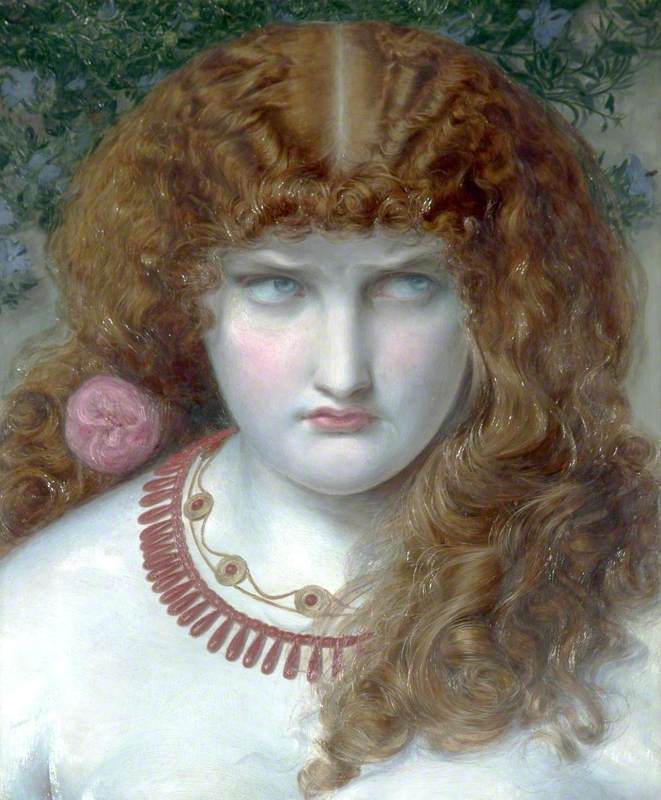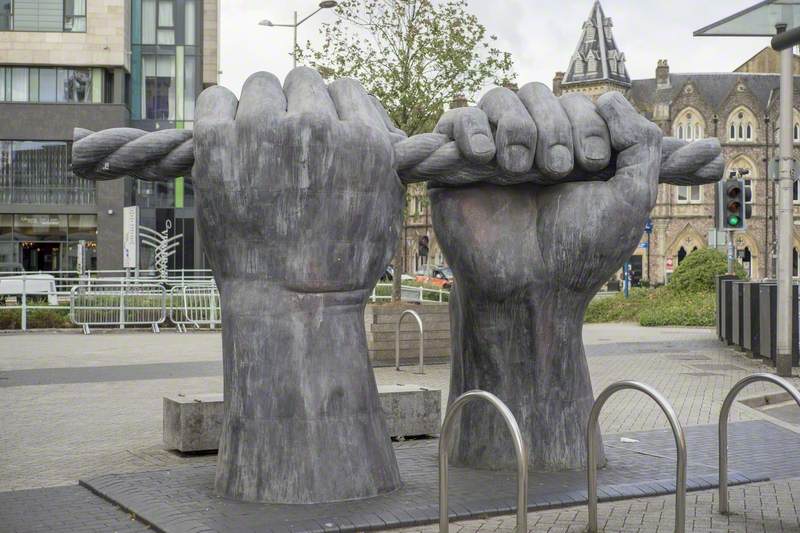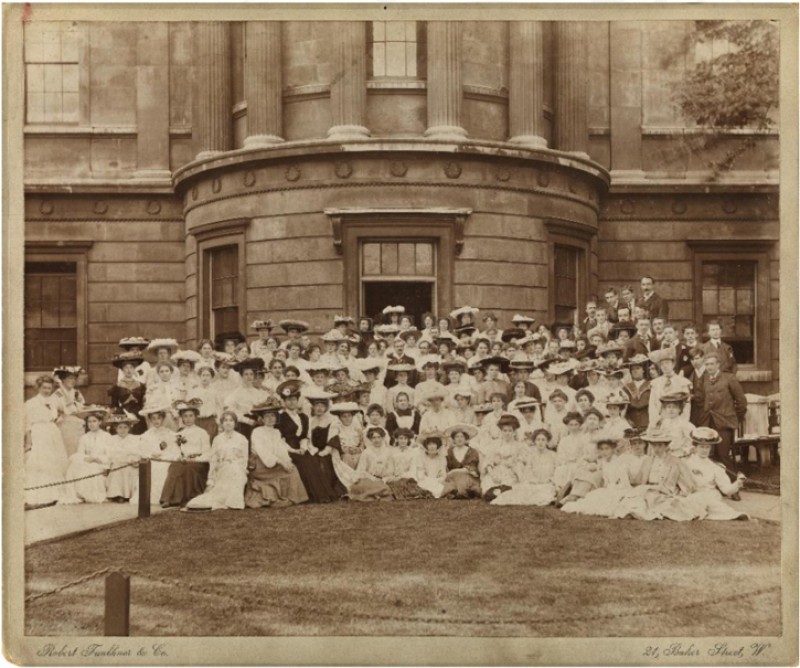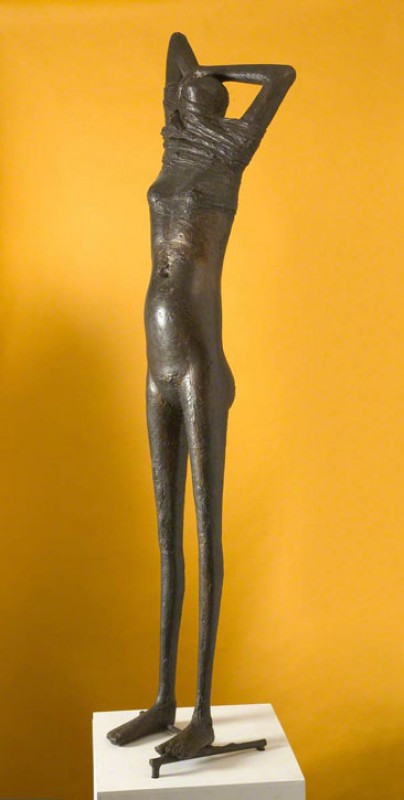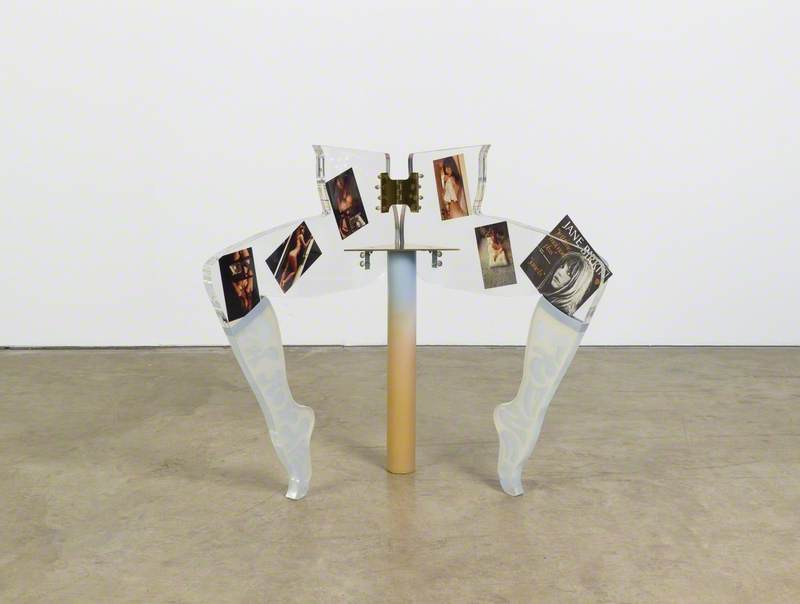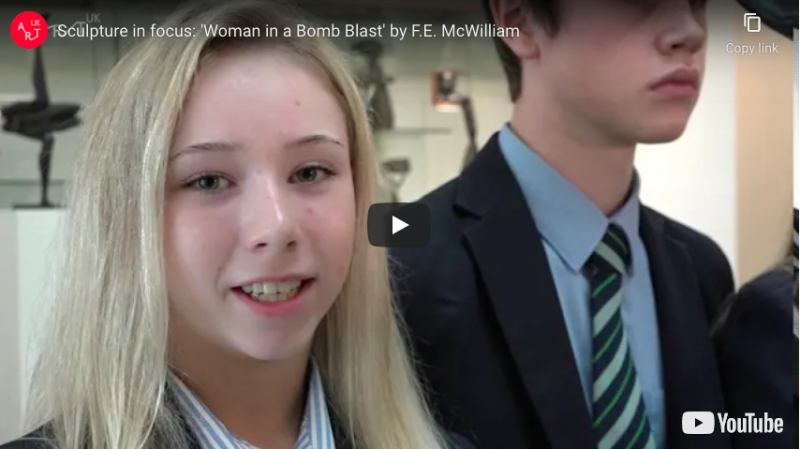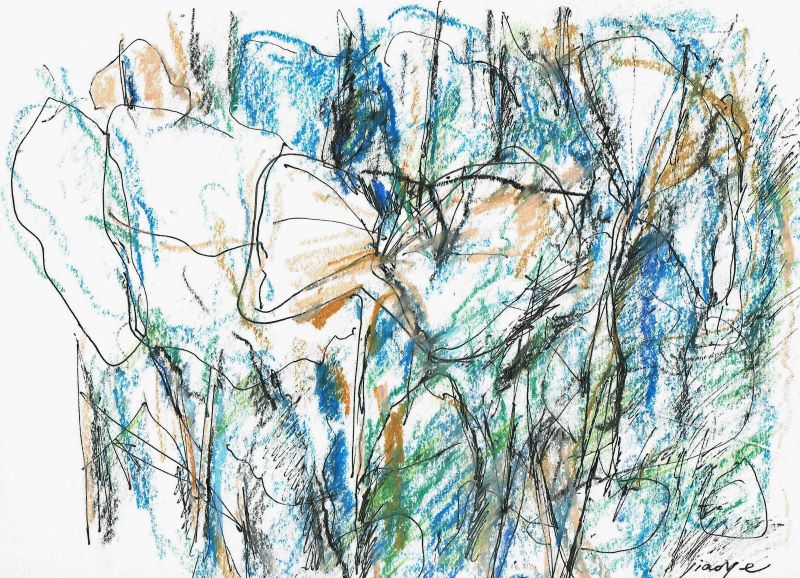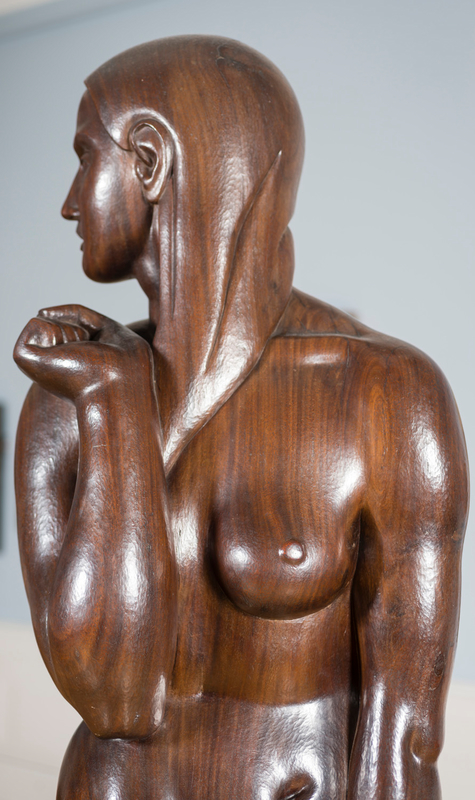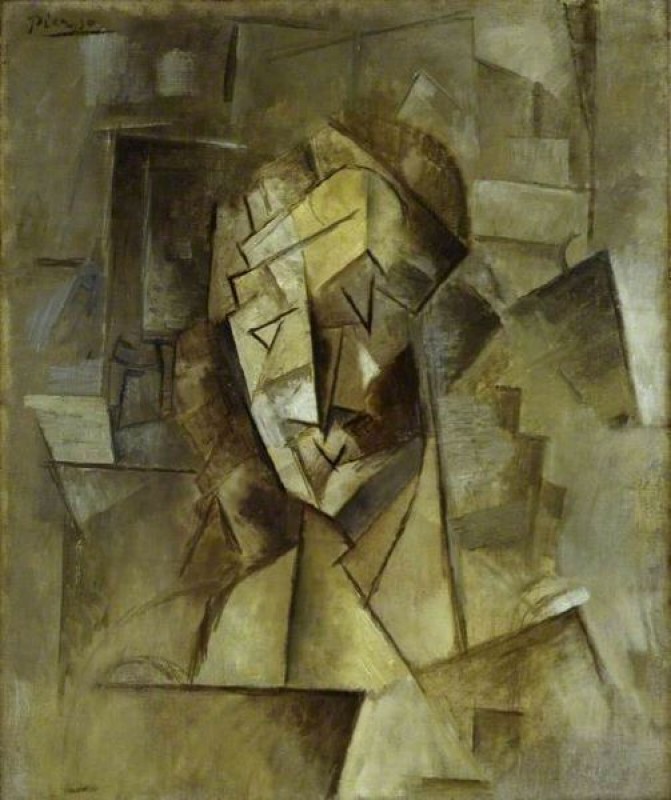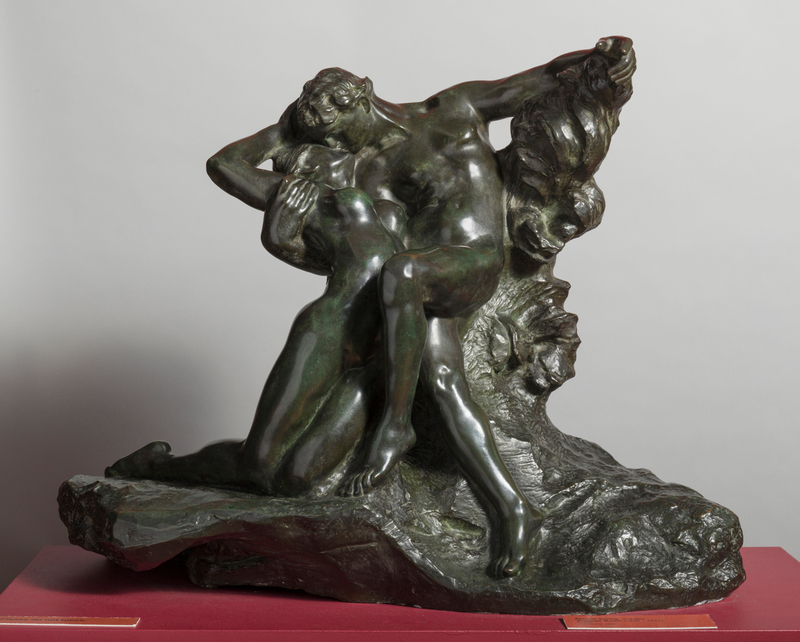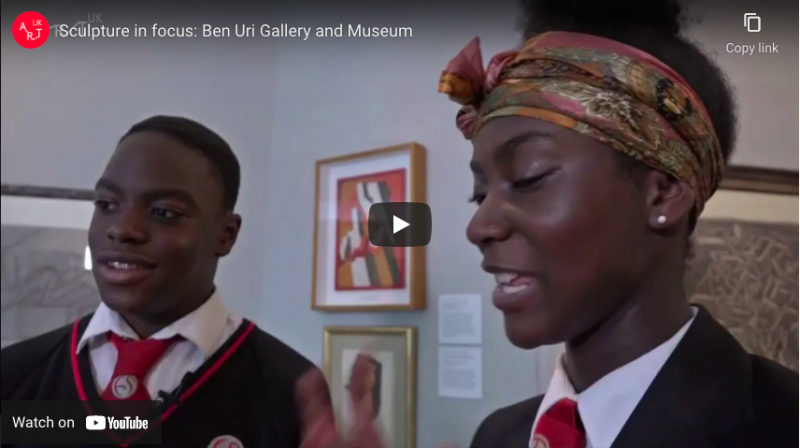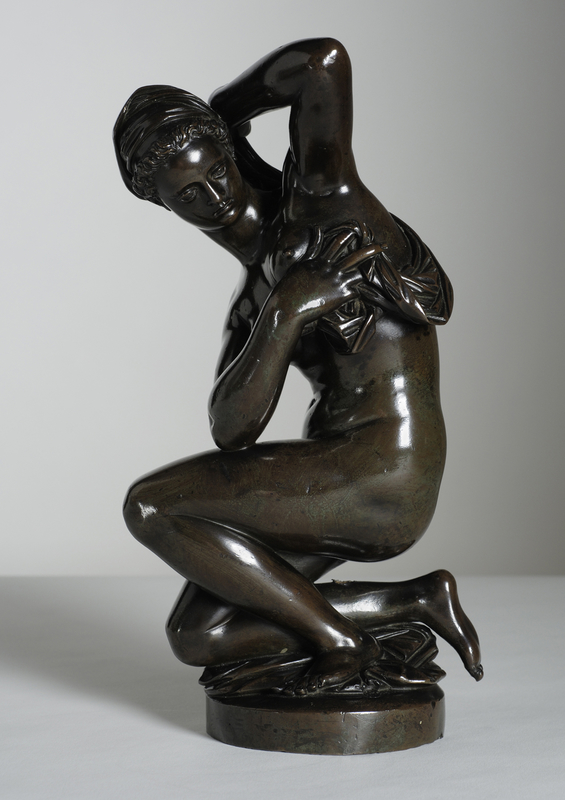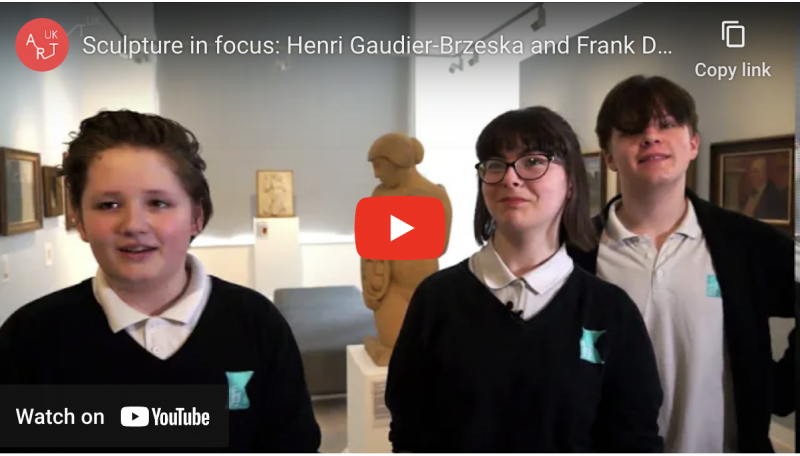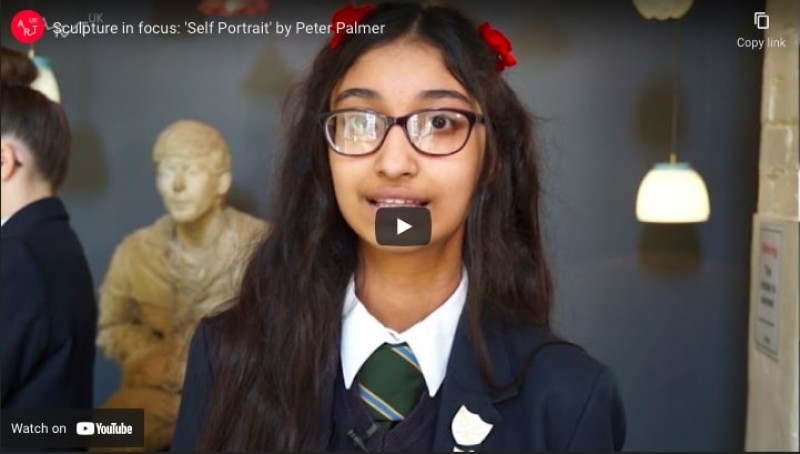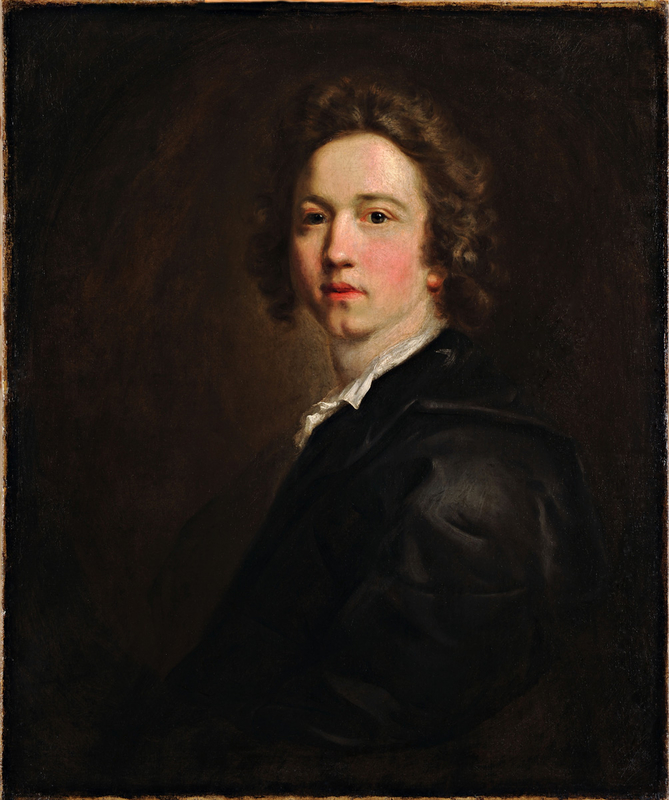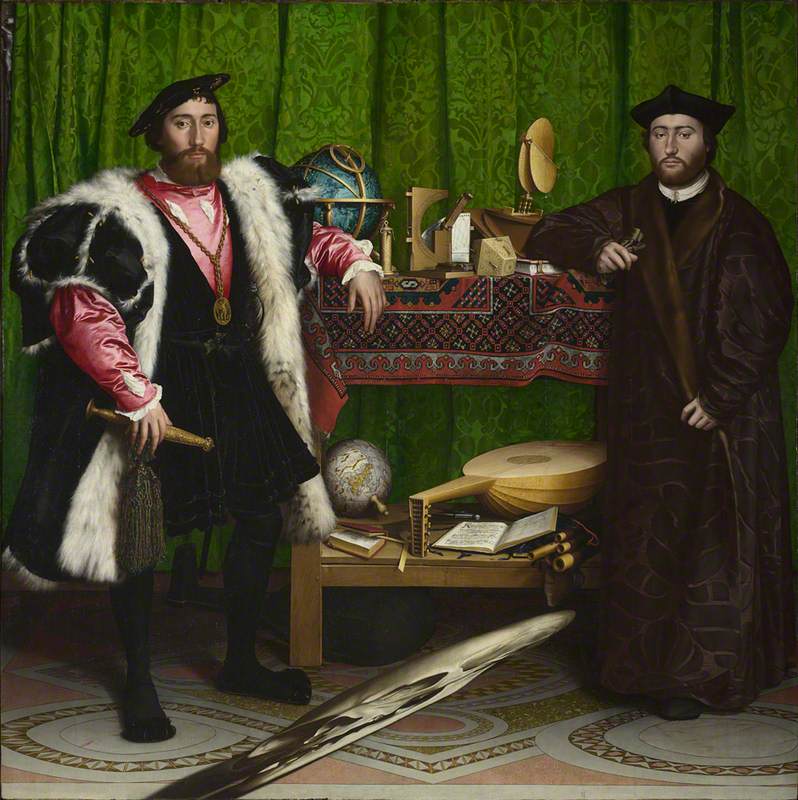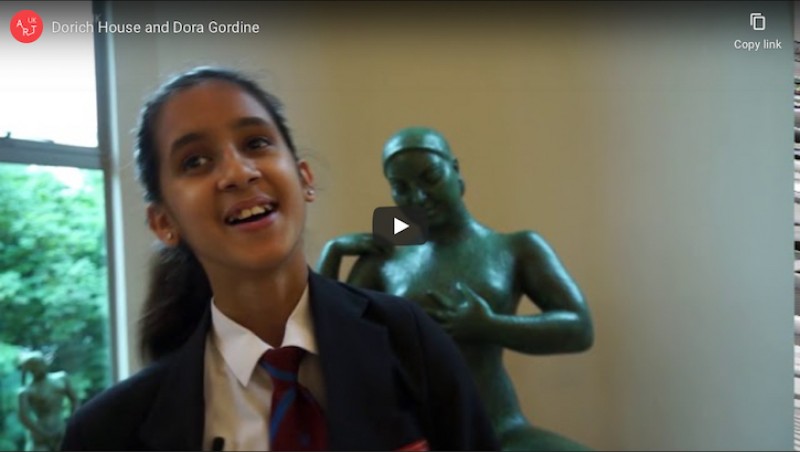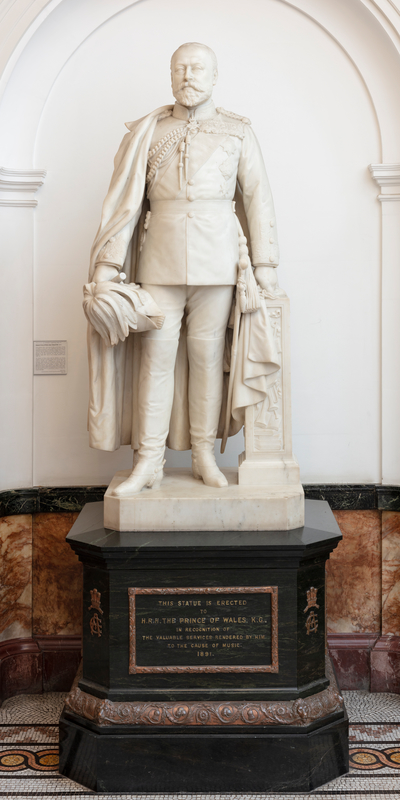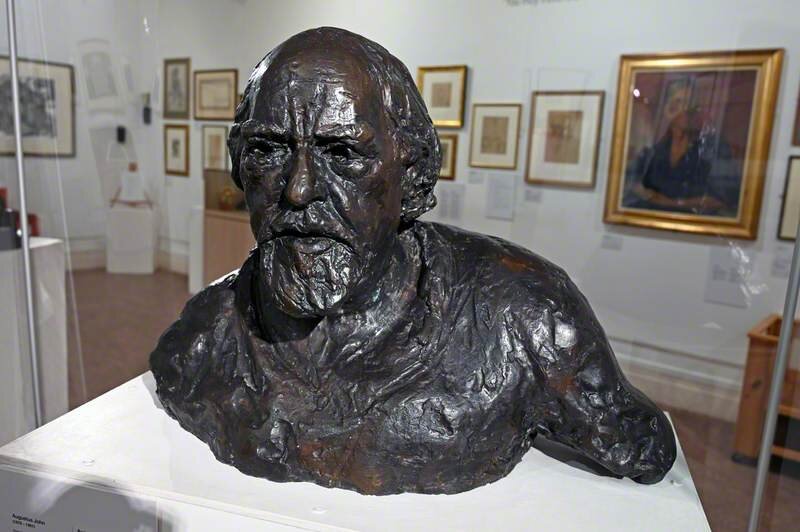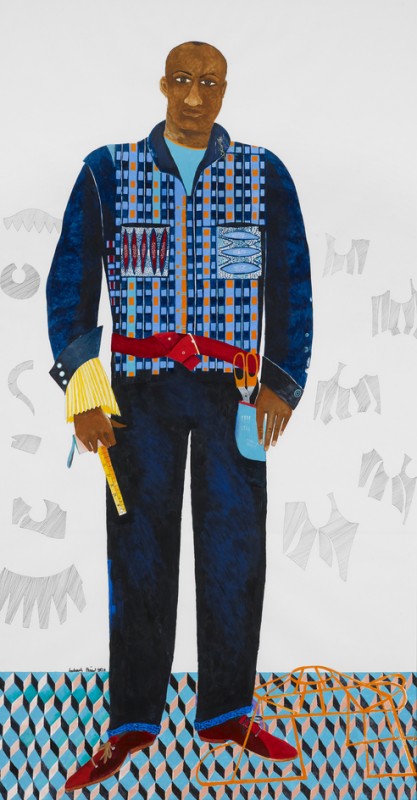'The Farnese Hercules'
This four-minute audio clip describes the sculpture The Farnese Hercules, after Glycon (c.AD 200–c.AD 250?) and Lysippos (active c.370 BC–c.300 BC).
Full audio description text
This vast sculpture of a nude man is at least twice life-size. It is The Farnese Hercules, on display at the Royal Academy. The work is a light tan colour, atop a black pedestal which in turn sits on a milk-white plinth. Overall, the statue stands at an imposing three and a half metres tall. It is situated in a large arched alcove along a passageway with pale brick walls.
Hercules is extremely muscular, with a strongly defined torso, arms and legs. He stands leaning on a large, knobbly club, which is carved to look like wood, and propped under his left armpit. The other end of the club is raised from the ground by a large boulder. The club is draped with a lionskin, its curly mane and gaping jaw protruding from the crook of Hercules' arm, with the paws resting on the boulder, at the other end of the limp skin. Hercules' right hand is tucked behind his back, holding three apples, the fruit dwarfed by his mighty palm. He has short hair and a full beard, both of tight ringlets. His head turns slightly to his left, with his gaze cast down across his left arm.
Hercules is a hero from classical mythology. He was famed for his strength and daring adventures, particularly his cycle of twelve labours. The club within the sculpture is his traditional weapon, and the lionskin and apples refer to episodes of heroism during the twelve labours.
The sculpture appears as if it is carved from a light-coloured stone, but is in fact made from plaster. It is a cast made in 1790 of a marble sculpture which is now in the Museo Nazionale in Naples. The original was sculpted in the early third century AD by an Athenian called Glycon, for display in the public baths in Rome. The work was recovered from the ruins of these baths in 1546, and was subsequently installed in a courtyard of the nearby Palazzo Farnese, then home to the aristocratic Farnese family. Hence the statue came to be known as The Farnese Hercules.
This sculpture is one of several plaster casts made especially for the Royal Academy in the late eighteenth century. Casts of acclaimed classical sculptures allowed artists and students at the Royal Academy Schools to study these artworks and learn artistic techniques. In an age when images could not be widely reproduced and travel was a luxury, these casts were the only way for aspiring artists to see the most famous and highly regarded works of art from the classical world.
The cast was made in Rome and shipped to London by sea. On arrival at the Royal Academy (which was then based at Somerset House on the Strand), the plan was to carry the cast upstairs to join other casts of classical sculpture in the Antique Room on the first floor. However the enormity of this statue raised concerns that the upper floor might not be strong enough to bear its weight, so instead it remained on the ground floor in the Front Hall for all to see.
One curiosity of the cast is the metal pin which protrudes from Hercules' lower abdomen, below the navel. In the nineteenth century, a fig leaf was hung from this pin to cover the statue's private parts when the Royal Academy was open to the public for the Summer Exhibition. This endeavour was intended to protect the decency of women visitors, for whom it was deemed an outrage to be exposed to such giant genitalia.
Art UK and VocalEyes
This audio description was created by VocalEyes for Art UK Sculpture, a national project to document and increase access to the UK's publicly owned sculpture. This description is one of 25 representing sculpture collections across the UK.
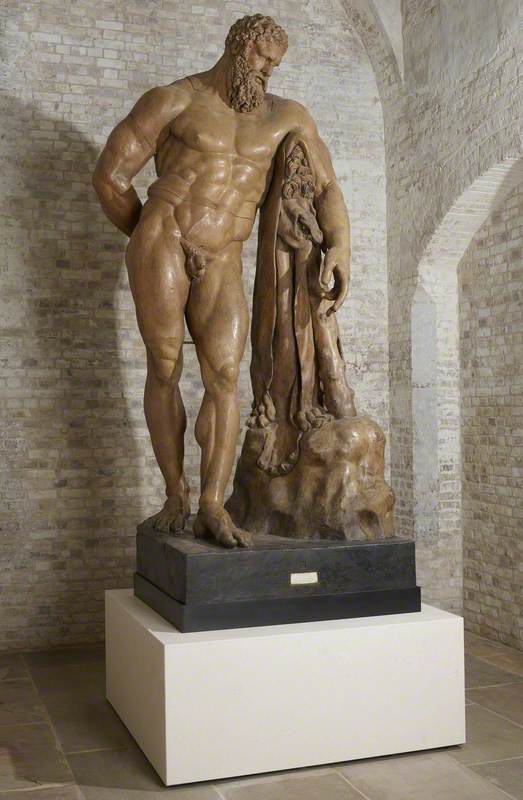
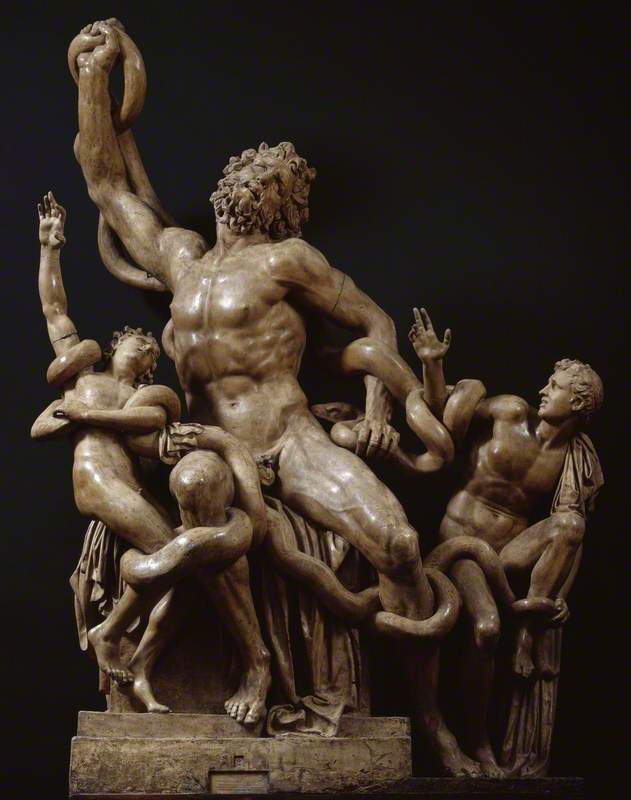
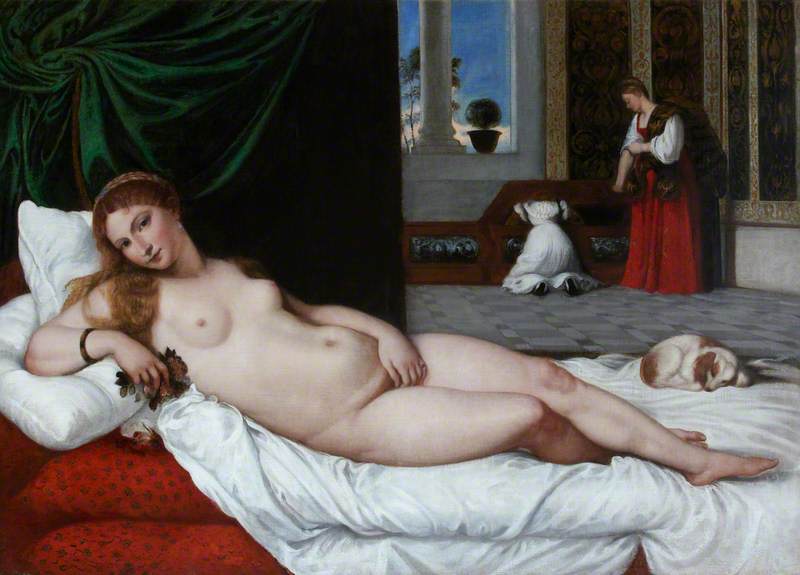
.jpg)
